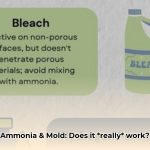Achieve professional-grade Type N mortar mixes with this comprehensive guide. Whether you’re a seasoned mason or a beginner, learn how to perfectly incorporate sand for strong, durable masonry projects.
Mastering Your Mortar Mix
Working with mortar is similar to baking—precise ingredients and measurements are crucial. Sand isn’t just filler; it’s vital for strength, workability, and longevity. Let’s explore the world of sand and Type N mortar.
Why Sand Matters
Mortar acts as the glue binding bricks or blocks. Cement is the active ingredient, but it needs something to grip. Sand provides this “grip” as the aggregate, offering a bulk material for cement adhesion. Interlocking sand particles create a robust matrix within the hardened mortar, ensuring a resilient wall against time and weather.
Selecting the Right Sand
Not all sand is equal. Type N mortar requires clean, sharp, fine-grained “masonry sand.” Avoid sand containing clay or organic matter, as these impurities can compromise strength and curing, potentially causing cracks or weakness.
Concrete sand, while sometimes usable in a pinch, has a coarser texture. This may necessitate adjusting the mix ratio. Consult a mason or your local building supply store if using concrete sand.
Mixing Methods: Mortar Made Easy
Two primary methods exist for mixing Type N mortar: from scratch and using a pre-mixed bag.
1. Mixing from Scratch: This method offers maximum control.
- Step 1: Pre-Hydration: Begin by adding approximately 2/3 to 3/4 of the required water to your mixer.
- Step 2: Cement Addition: Pour in the masonry cement.
- Step 3: Sand Incorporation: Gradually add the sand while the mixer runs, ensuring even distribution. Simultaneously, slowly add the remaining water until the desired consistency is achieved—a workable, but not runny, texture resembling thick peanut butter.
- Step 4: Thorough Mixing: Run the mixer for at least 5 minutes to thoroughly combine all ingredients and eliminate dry pockets.
2. Using Pre-Mixed Mortar: Pre-mixed mortar offers convenience but may require sand adjustments for consistency. However, excessive sand can weaken the mix. Carefully follow the manufacturer’s instructions regarding sand additions.
Benefits of Sand
- Enhanced Strength and Durability: Sand significantly increases resistance to weathering, cracking, and erosion.
- Improved Workability: The right sand ensures ideal consistency, preventing overly soupy or stiff mortar.
- Stronger Bonding: Sand promotes better adhesion to bricks or blocks.
- Cost-Effectiveness: Sand is typically less expensive than cement, offering performance enhancement without significant cost.
Troubleshooting
- Dry/Crumbling Mortar: Add small amounts of water while mixing until the desired consistency is reached.
- Wet/Runny Mortar: Gradually add small amounts of sand to thicken the mix.
- Weak/Cracking Mortar: This suggests poor sand quality or incorrect mix ratios. Check the sand for impurities and verify the proportions. Consult a professional mason if problems persist.
Mixing mortar, while seemingly minor, is crucial for any masonry project. Understanding sand’s role and following proper procedures ensures strong, durable, and lasting results. Do you have anchor bolts that won’t hold? Learn how to fix anchor bolts wont hold and avoid potential injuries and rework.
Quikrete Mortar Mix: Do You Need to Add Sand?
Quikrete mortar mix simplifies projects with its pre-mixed convenience. But do you need to add sand? Most likely, no. Quikrete mortar mix already contains the correct sand proportion for optimal performance. Adding extra sand disrupts this balance and can weaken the mortar, compromising its bonding strength. It’s like adding too much flour to a recipe – it alters the intended outcome. This can result in crumbly mortar, unsuitable for securing bricks or stones.
Specific projects with unique demands might require adjustments. In such cases, consult Quikrete’s official guidelines rather than randomly adding sand. Ongoing research on mortar mixes suggests that best practices could change in the future.
Quikrete offers both concrete mix (requiring added gravel) and mortar mix (containing the necessary sand). This distinction is often a source of confusion. Quikrete mortar mix includes Portland cement, specifically graded sand, and other additives. Adding sand is generally unnecessary and can negatively impact the mix. However, for color matching (using pigmented sand), carefully consider the structural implications and consult manufacturer guidelines. For example, a user on DoItYourself.com added white silica sand to match existing mortar raising questions about structural impact. Thinking of adding a Polaris to your pool pump system? Understanding its function can maximize your pool cleaning.
To use Quikrete mortar mix correctly, simply add water according to the instructions. While minor water adjustments may be acceptable for consistency, avoid adding sand unless specifically recommended by Quikrete.
Deconstructing Mortar Strength: Does More Sand Really Equal a Stronger Mix?
The question of whether more sand strengthens mortar is a common misconception. The answer is a definitive no. Optimal strength lies in the correct sand-to-cement ratio. Too much sand weakens the mortar, making it brittle and prone to cracking. Sand in mortar acts as an aggregate, providing bulk and contributing to compressive strength and workability. However, the balance with cement determines the final product performance. Pre-mixed mortar already contains this carefully calculated ratio. Adding more sand disrupts this balance and may severely compromise the mixture. Excess sand weakens cement’s binding power creating a structure with weak links vulnerable to cracking. Conversely, too little sand makes the mix thick and prone to shrinkage cracking.
Type N mortar, a common all-purpose choice, typically uses a 1:2.25-3 cement-to-sand ratio. Modifying pre-mixed mortar by adding sand is strongly discouraged, as it undermines its designed strength. Water content also impacts mortar. Too much weakens it; too little hinders workability.
Mixing Sand with Hydraulic Cement: Ratios, Types, and Best Practices.
Sand isn’t merely filler in hydraulic cement mixes; it’s crucial for strength, workability, and durability. The sand-to-hydraulic cement ratio depends on the application and desired strength. Typical mortar mixes utilize a ratio of one part cement to 2.25-3 parts sand. Using the correct sand type and amount ensures optimal performance and prevents brittleness or weakness in the cured cement. Pre-mixed mortars often contain pre-proportioned sand, but adjustments or custom mixes from scratch are possible.
Sand acts as an aggregate, influencing strength, durability, shrinkage, and workability. Mortar types (N, O, S, M) have varying sand-to-cement ratios. Type N typically uses a 1:2.25-3 ratio with a 0.5-0.6 water ratio. Accurate measurements are essential for custom mixes. Water is vital for hydration and proper consistency. Choose clean, sharp sand (construction-grade) avoiding fine play sand or sand with impurities. Lime can be added to mortar for workability and water retention.
Modify pre-mixed mortar with caution, considering potential benefits and drawbacks. Hydraulic lime, while distinct from Portland cement, offers benefits in applications like historical restoration. Sand grading, or particle size distribution, also affects mortar properties. Visual aids and troubleshooting guides can improve understanding and address common issues.
- Does 100% Polyester Shrink? A Complete Guide to Washing & Drying - April 16, 2025
- Elegant Drapery Solutions for Arched Windows: A Complete Guide - April 16, 2025
- The Best Dining Room Tables with Drop Leaves: A Buyer’s Guide - April 16, 2025










